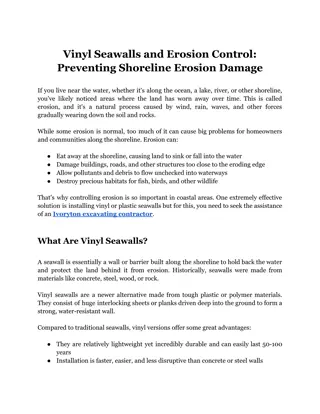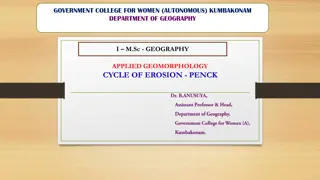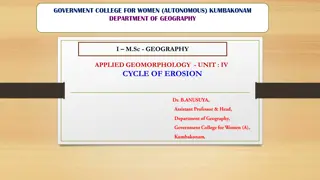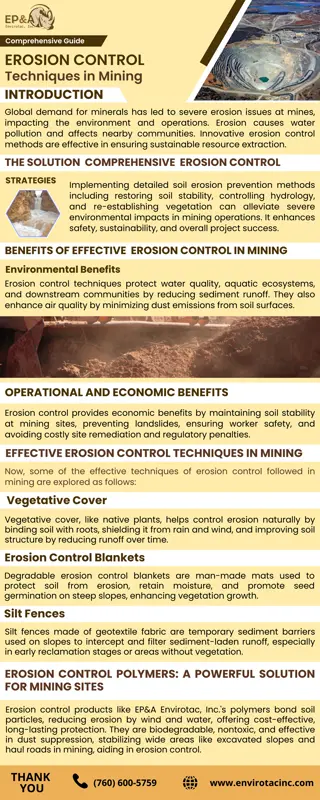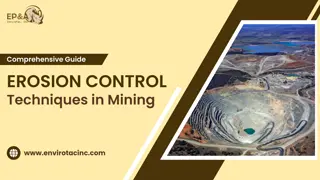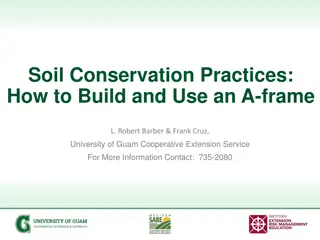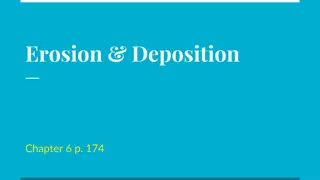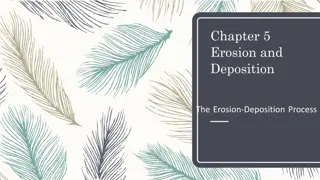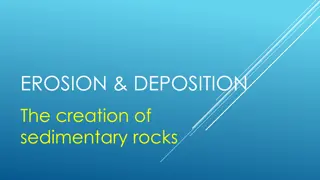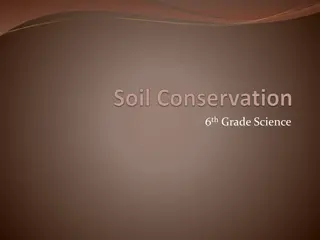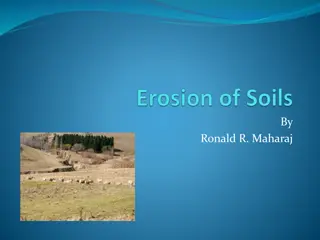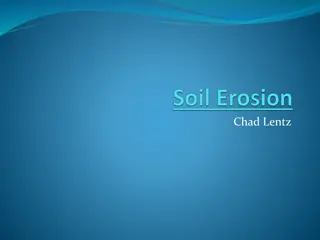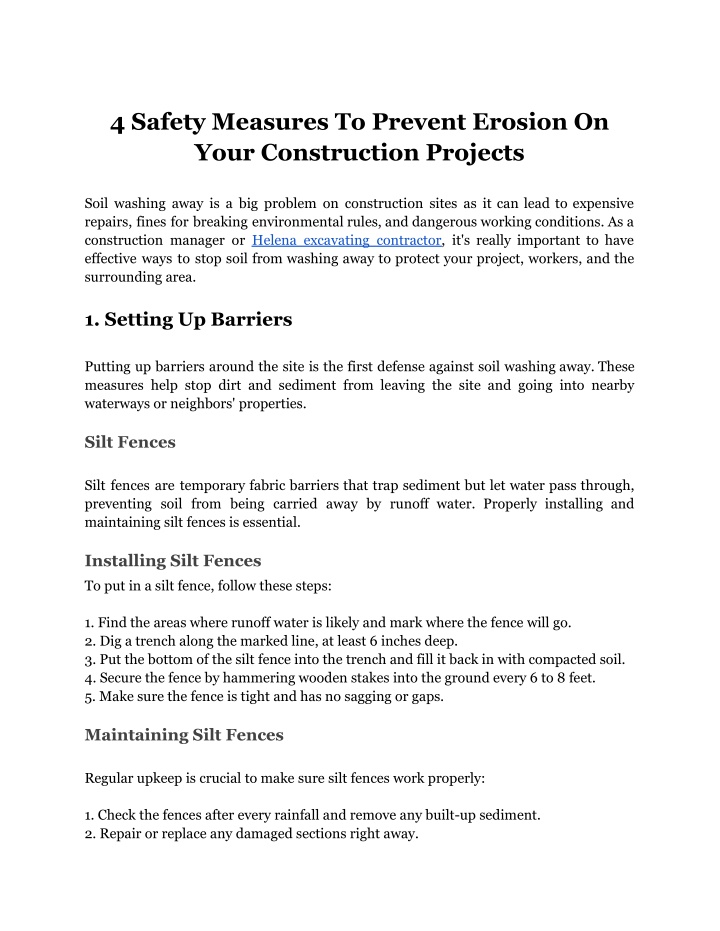
4 Safety Measures To Prevent Erosion On Your Construction Projects
Soil washing away is a big problem on construction sites as it can lead to expensivenrepairs, fines for breaking environmental rules, and dangerous working conditions. As anconstruction manager or Helena excavating contractor, it's really important to haveneffective ways to stop soil from washing away to protect your project, workers, and thensurrounding area
Download Presentation

Please find below an Image/Link to download the presentation.
The content on the website is provided AS IS for your information and personal use only. It may not be sold, licensed, or shared on other websites without obtaining consent from the author. If you encounter any issues during the download, it is possible that the publisher has removed the file from their server.
You are allowed to download the files provided on this website for personal or commercial use, subject to the condition that they are used lawfully. All files are the property of their respective owners.
The content on the website is provided AS IS for your information and personal use only. It may not be sold, licensed, or shared on other websites without obtaining consent from the author.
E N D
Presentation Transcript
4 Safety Measures To Prevent Erosion On Your Construction Projects Soil washing away is a big problem on construction sites as it can lead to expensive repairs, fines for breaking environmental rules, and dangerous working conditions. As a construction manager or Helena excavating contractor, it's really important to have effective ways to stop soil from washing away to protect your project, workers, and the surrounding area. 1. Setting Up Barriers Putting up barriers around the site is the first defense against soil washing away. These measures help stop dirt and sediment from leaving the site and going into nearby waterways or neighbors' properties. Silt Fences Silt fences are temporary fabric barriers that trap sediment but let water pass through, preventing soil from being carried away by runoff water. Properly installing and maintaining silt fences is essential. Installing Silt Fences To put in a silt fence, follow these steps: 1. Find the areas where runoff water is likely and mark where the fence will go. 2. Dig a trench along the marked line, at least 6 inches deep. 3. Put the bottom of the silt fence into the trench and fill it back in with compacted soil. 4. Secure the fence by hammering wooden stakes into the ground every 6 to 8 feet. 5. Make sure the fence is tight and has no sagging or gaps. Maintaining Silt Fences Regular upkeep is crucial to make sure silt fences work properly: 1. Check the fences after every rainfall and remove any built-up sediment. 2. Repair or replace any damaged sections right away.
3. Reinforce the fence if it gets loose or dislodged. Traps and Sediment Basins Sediment basins and traps are temporary or permanent dirt collection areas designed to capture sediment-filled runoff from disturbed areas. They allow sediment to settle out before the water is released, preventing soil erosion and protecting nearby waterways. Building Sediment Basins and Traps When building sediment basins or traps, consider: 1. Location: Put them at low points on the site where runoff collects. 2. Size: Figure out the right size based on the drainage area and expected runoff. 3. Outlets: Install a controlled outlet like a pipe or spillway to regulate water release. 4. Upkeep: Regularly remove built-up sediment to keep the basin's capacity. 2. Using Erosion Control Blankets and Mulch Erosion control blankets and mulch are temporary soil coverings that protect exposed soil from wind and water. They provide immediate protection and help grow permanent vegetation. Erosion control blankets are made of biodegradable materials like straw or coconut fiber held together by netting. They are rolled out directly on the soil to stabilize slopes, channels, and disturbed areas. Installing Erosion Control Blankets Follow these steps to install erosion control blankets: 1. Prepare the soil by removing any debris or rocks. 2. Anchor the top of the blanket at the top of the slope using stakes or trenches. 3. Unroll the blanket down the slope, overlapping the edges of adjacent rolls. 4. Secure the blanket with stakes every few feet. 5. Make sure the blanket is in full contact with the soil. Mulches Mulches like straw, wood chips, or gravel provide temporary cover and help keep the soil moist to grow vegetation.
Applying Mulches When placing mulch, follow these guidelines: 1. Prepare the soil by removing debris and rocks. 2. Apply an even 2-4 inch thick layer of mulch. 3. Use spray or netting to keep loose mulch in place on slopes and windy areas. 4. Overlap the edges when applying adjacent sections of mulch. 3. Stabilizing Slopes and Drainage Channels Slopes and drainage channels are very prone to soil washing away due to concentrated water flow. Proper stabilization techniques are essential to prevent soil loss in these areas. Geosynthetic Erosion Control Products Products like turf reinforcement mats and cellular soil confinement systems provide permanent or semi-permanent protection for slopes and channels. These products reinforce vegetation and withstand high water flow. Installing Geosynthetic Products Follow these steps to install geosynthetic erosion control products: 1. Prepare the soil surface by removing debris and rocks. 2. Anchor the product at the top using stakes or trenches. 3. Unroll down the slope, overlapping adjacent rolls. 4. Secure with stakes every few feet. 5. Apply seed and topsoil if needed to grow vegetation. Riprap and Gabions Riprap (loose rock) and gabions (rock-filled wire baskets) are hard armor methods using rock to protect slopes and channels from erosion. When installing riprap or gabions: 1. Prepare the slope/channel by removing debris and vegetation. 2. Install a fabric liner or gravel base to block soil movement. 3. Place riprap or gabions in a uniform layer, overlapping and interlocking.
4. Secure with anchors or cable ties if needed. 4. Good Housekeeping Practices on Site Proper housekeeping practices on construction sites can reduce the risk of soil washing away and sediment pollution. This includes minimizing disturbed soil, properly managing soil piles, and controlling dust. Minimizing Soil Disturbance Only disturb the soil in areas necessary for construction activities. Careful planning and phasing can help minimize disturbed areas. Strategies: 1. mark site boundaries to prevent disturbance outside. 2. Phase activities to minimize total exposed soil area. 3. Quickly stabilize areas after completing work there. Managing Soil Piles Properly managing soil piles is crucial to prevent erosion and runoff. Keep piles away from drainage areas and catch basins. Best Practices: 1. Cover piles with tarps or blankets to block wind/water. 2. Install silt fences or berms around pile perimeters. 3. Locate piles on flat ground away from drainage paths. 4. Vegetate or mulch piles that will sit for a while. Controlling Dust Dust from construction can pollute the air and cause soil erosion. Implementing dust control helps prevent these issues. Dust Control Techniques: 1. Apply water or dust suppressants to exposed soil and piles. 2. Limit vehicle speeds on unpaved areas. 3. Use wind fences around the perimeter. 4. Cover or stabilize disturbed areas as soon as possible.
Conclusion By using these four ways you can effectively prevent soil from washing away on construction projects. Proper installation environment, follow regulations, avoid fines and costly repairs, and keep your work crew safe. and maintenance will protect the Schaefer Excavating & Construction is a proud family-owned business rooted deeply in the local community. For top-notch safety measures to prevent erosion on your construction projects, rely on our expert Helena excavation services. Our experienced excavators in Helena MT are dedicated to excellence and ensuring your project s success. Contact us today!



